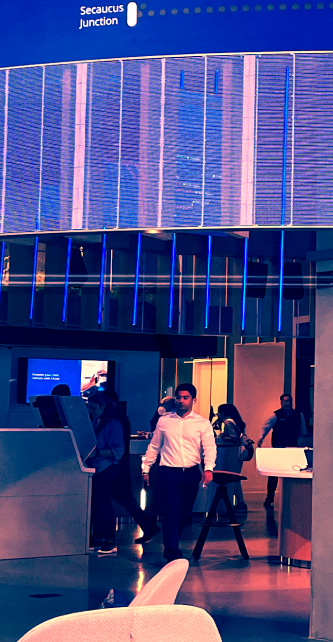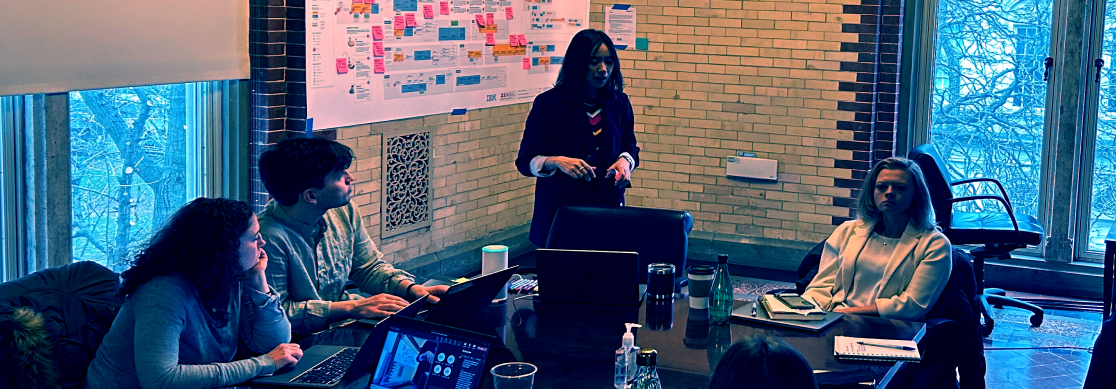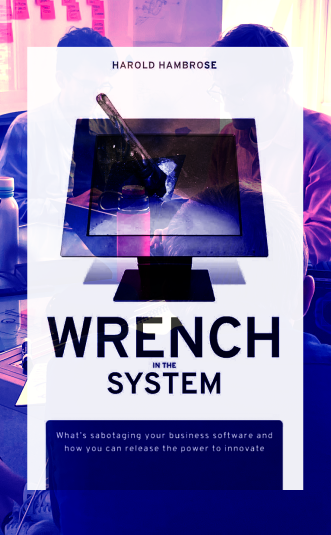Reimagining work
Business processes are often portrayed in an overly simplified and linear manner.
Yet work is multi-lateral and defined by distinct, and equally important, operational axes.
When business operations are considered more broadly than just business processes and their enabling technology, a new landscape of opportunity opens up. And impact can be significant. By defining business operations across four axes of work, Zenda's WorkDesign™ allows you to see more deeply into your business, explore ideas, create and test new approaches, and apply new skills, methods, and tools.
Human
The greatest untapped source of operational insight lies in the human context of work. Yet the workforce has been viewed as the greatest source of risk to business' operational strategies and tactics.
Zenda incorporates a new understanding of the workforce into the decisions that drive how business is executed, transforming the experience of employees and, in turn, customers.
Human performance metrics (behavioral, cognitive, social) drive transformational discoveries that escape traditional efficiency-driven best practices methodologies.
Technology
The “usability” of a business system is no longer a goal — it is table stakes. Technology’s place within the business operation must pay equal regard to business objectives, the worker, and the role of data within the work event.
Every business system — built, bought, already deployed, or in planning — represents an opportunity to operate differently, more effectively, more innovatively. By allowing WorkDesign™ to define how technology will serve the operation, adoption risks are mitigated, transformation costs decrease, and promised operational impacts are guaranteed.
Business
Operations are a combination of processes, policies, regulations, infrastructure, skills, culture, data, individuals, and beyond. The best business operations are driven by a careful orchestration of the most important aspects of the work event.
When reimagining how work happens, business leaders collaborate with technologists, data experts, workforce members, executives, customers, and a variety of other stakeholders. To harmonize these disparate voices, Zenda consultants drive collaboration through operation models that render a singular, synergistic vision of the best possible business operation.
Data
Data is no longer the static record of business, the tea leaves from which the future is predicted. Machine learning, large language models, and generative AI make data a real-time actor affecting the execution of business.
How data can and should affect the execution of work is a question as important to answer from a human perspective as it is from a business, policy, or procedural perspective. Data, the latest actor inside business operations, must be designed into the work.
Where We Work
Areas of Expertise

Risk Management
.png?width=794&height=106&name=Frame%2037292%20(1).png)
.png?width=794&height=106&name=Frame%2037292%20(1).png)
From regulatory compliance to policy implementation, people are the greatest risk to operational success. We uncover how and why workers perform as they do. We leverage our client’s expertise in their business to translate human insights into compliant, efficient, and effective work designs that a workforce wants to adopt.
Cost Savings
Noncompliance fines and penalties carry significant costs. By combining our human perspective with our client’s domain expertise, we develop new ways of working that propel compliance, because to the worker, the new mode is clearly better than before.
Operational Efficiency
People want to perform well at their jobs. People can also be resistant to change, inventing ways of working that, from their perspective, seem more effective, even when, observed holistically, they are not. By understanding people and their work, we infuse processes and tools with a robust picture of the human context, driving faster and more effective adoption.
Business Transformation
If human insight informs strategies and tactics, regulation and policy can lead to more than compliance. Our insights on culture, skills, and tendencies provide direction that can make regulatory compliance a transformational windfall.
Process Innovation and Efficiency


Innovation and efficiency turn on an organization’s workforce. By ignoring the people who compose a company, a consulting firm’s strategies and tactics don’t just fall short of expectations, they fail to leverage the most valuable source of insight, discovery, and invention. We don’t sell “best practices.” We unpack the unique human complexity of our client’s operations.
Cost Savings
Our observation of work as it transpires provides an accurate view of what is happening, explaining pain points, revealing unknowns, and challenging hypotheses. This perspective enables more effective technology selection and faster deployments. Systems are configured with human sensitivity so that training and change management costs are reduced or eliminated.
Operational Efficiency
At Zenda, we call Excel the “duct tape” of the knowledge worker. We often observe workers using it as a workaround to get things done, despite existing processes and systems. This discovery is a view into a worker’s needs, the organization’s culture, and an invention’s opportunity for benefitting the whole operation.
Business Transformation
If human insight informs strategies and tactics, regulation and policy can lead to more than compliance. Our insights on culture, skills, and tendencies provide direction that can make regulatory compliance a transformational windfall.
Corporate Restructuring and Acquisitions


Corporate restructuring and acquisition efforts align around the rationalization of assets and processes, with human capital often assessed in spreadsheets and org charts. People, however, are key to the past successes of the respective businesses and the promised success of the blended future. Our human insights make this promised success a reality.
Cost Savings
Spreadsheets are a handy abstraction of the parts within a restructuring event — inventories of tools, processes, departments, and roles. But rows and columns ignore the realities of how work has historically been successful and how to leverage the talent responsible for this success in the new, transformed environment. We illuminate this reality, providing the roadmap to reduce redundancy, maximize talent capabilities, enhance people satisfaction, and, in sum, generate better bottom lines.
Operational Efficiency
In M&A events, the potential for a more efficient and productive future state is often left unassessed, ignoring the risk that lies in the human context. Old habits die hard, but when people can clearly envision their future value and impact, new behaviors are adopted quickly. Our depictions of the future state provide exactly that, a means for people to see themselves in a future more productive than the past.
Business Transformation
In M&A events, a “best of both worlds” outcome is often imagined and rarely achieved. Our human-centered, ground-up view of operations enables a transformation that is truly better than the sum of the merger’s parts.
Enterprise Resource Planning


Coordinating actions and resources across an organization goes beyond the dashboard of any enterprise resource planning solution. It requires a balanced understanding and orchestration of the organization’s people, policy, tools, and data. As experts in observing organizations in their entirety, we provide this balanced understanding. As experts in WorkDesign, we provide the roadmap for orchestration.
Cost Savings
In theory, an ERP system reduces costs, integrating and centralizing previously siloed systems. In practice, this cost reduction requires the buy-in of an organization’s workforce. Our human insights allow business operators to meet their workforce where they are, putting theory into practice.
Operational Efficiency
ERP systems promise more efficient operations. Multi-step processes of the past are said to become one, automation seamlessly connecting what once was a motley assortment of tasks. Yet without clear, cross-functional vision into those tasks and their connections, automation is only a promise. Our thorough observation of work gives business operators the clear vision ERP automation requires.
Business Transformation
Given a robust understanding of the human context of work, implementing an ERP system offers the opportunity for transformation across the organization. Our expertise in the human context ensures that adopting new ERP tools prompts the transformation an organization actually needs.
View our latest
Case Studies
Learn how the Zenda Team helped a major client re-engineer their reporting model starting with a Human Centered approach to the Processes, Tools, and Data requirements necessary for the client to enable strategic and operational goals.
Consumer Products, Manufacturing, Pharmaceuticals, Finance
In finance, new product development must be consistent, complete and timely. The work is globally distributed, multi-disciplinary, highly regulated, and driven by people.
Finance
Inventory management and product ordering systems accounted for business processes but not customer needs and expectations.
Pharmaceuticals
After deploying Ariba and 'industry best practices' Procurement remained a bottleneck and customers were still dissatisfied.
Investment Banking
With a marketplace full of collaboration and communication solutions, understanding the human context of work drives infrastructure decisions with measurable impact.
Consumer Products, Manufacturing, Pharmaceuticals, Finance
Optimizing Enterprise Communication and Organizational Connectivity through Human-Centered Design
Consumer Products, Manufacturing, Health, Finance

Our Thoughts
Read Our Whitepapers
The Expert’s Best Practices Can Deliver Less Than the Best
by Harold Hambrose
Disrupt, innovate, improve, transform. These stand as aspirational goals at every level of an organization and across every industry. They also serve as the management consultant’s promised achievements, the projected outcomes of “best practices” guaranteed to deliver. Yet deriving anything like innovation or transformation from a pre-packaged product is a tall, if not impossible, order.
.png?width=898&height=241&name=Ville_Radieuse_-_84%201%20(1).png)

Master Data Management
by My Nguyen
When a Fortune 50 consumer products giant asked a Big Four management consulting firm to solve Master Data challenges, business process redesign and new technology platforms were the extent of their recommended solutions. Zenda’s human-centered approach challenged their assumptions and delivered the promised, measurable digital transformation.
Matter Management, Regulation and Design’s Human Insights
by Harold Hambrose
When business operations are subject to the critical gaze of regulators, workers may be viewed as a source of risk, training expense and policy enforcement. Taking a human-centered approach to meeting regulatory compliance offered a global investment bank an opportunity to deliver a better way of working, explore new operating models and make smarter platform purchasing and deployment decisions.
Please, No More User-Centered Design
By Harold Hambrose
As I carved out a design career in the technology industry, the humanity of my design training was slowly but surely subverted by a term with which I have grown increasingly uncomfortable. Like floppy disks, CDs, mouse cords and forty-five-pound monitors, the word user should be left behind with so many other cast-offs of computing technology’s early days.
Our thoughts
Zenda Voices


Wrench in the System
“Harold Hambrose's book pointed out, in plain language and with concrete examples, why business software generally doesn't work and how to fix it. I am well acquainted with the literature that covers design of technology systems, and Hambrose's text is the only one that adequately tackles software product design issues in a practical and accessible manner."
— CIO, Pharmaceutical vertical Fortune 100 company about Wrench in the System
“Together with thought leaders like Edward Tufte, Harold Hambrose reminds us that great design can change the world."
— Tony Pizi, CIO, Asset Management, Platform Services, Deutsche Bank